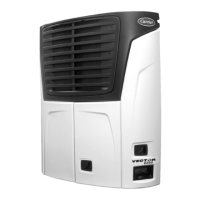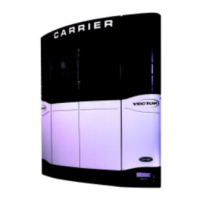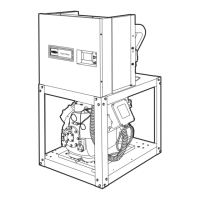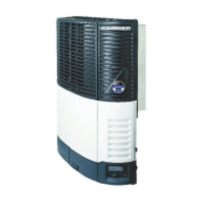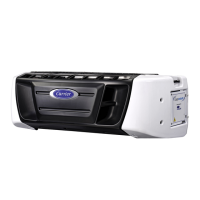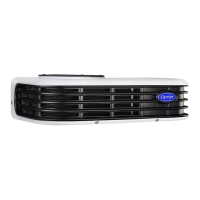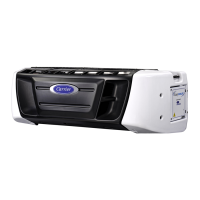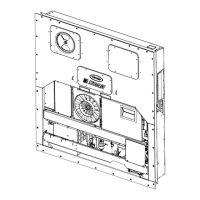62-61753-21
93 CHECK START UP BUZZER
TRIGGER-ON: The Buzzer circuit is shorted. (The Buzzer output from the microprocessor is negative,
so the circuit will not be shorted to ground, but is shorted either within the Buzzer itself, or to a posi-
tive wire.
UNIT CONTROL: Engine and standby operation: alarm only.
RESET CONDITION: Auto Reset when Buzzer amp draw is normal, or alarm may be manually reset
via keypad or by turning the unit off, then back on again.
NOTE: Follow the steps below until a problem is found. Once a repair or correction has been made, the active
alarm should clear itself (refer to reset condition above). Operate the unit through the appropriate modes to see if
any active alarm occurs. Continue with the steps below as necessary.
a. Inspect Buzzer & wire connections.
No damage to buzzer.
No damaged or corroded pins.
b. Check resistance of buzzer.
Refer to Section 2.12. Cannot be opened (infinite
ohms), shorted (Zero Ohms) or shorted to ground.
a. Inspect harness & control box
connector pins & terminals. (See
wiring schematic Section 10.)
No physical damage to harness.
No damaged or corroded pins.
Check Buzzer Current Draw
a. Use Component Test Mode to test
actual current draw of the circuit.
(Refer to Section 5.1.2.)
Component FET or board LED (refer to Table 5-1)
must be illuminated.
View current draw in Data List.
Refer to Section 2.12 for normal current values.
94 CHECK COMP CONTACTOR 1 (COMPRESSOR CONTACTOR RELAY)
TRIGGER-ON: Compressor Contactor Relay (CCONR) coil current is excessive.
UNIT CONTROL: Engine and standby operation: alarm only.
RESET CONDITION: Auto Reset or alarm may be manually reset via keypad or by turning the unit
off, then back on again.
NOTE: Follow the steps below until a problem is found. Once a repair or correction has been made, the active
alarm should clear itself (refer to reset condition above). Operate the unit through the appropriate modes to see if
any active alarm occurs. Continue with the steps below as necessary.
a. Inspect relay coil and terminals.
No damage to coil.
No damaged or corroded pins.
b. Check relay coil resistance.
Refer to Section 2.12. Cannot be opened (infinite
ohms), shorted (Zero Ohms) or shorted to ground.
a. Use Component Test Mode to test
actual current draw of the coil.
(Refer to Section 5.1.2.)
Component FET or board LED (refer to Table 5-1)
must be illuminated.
View current draw in Data List.
Refer to Section 2.12 for normal current values.
a. Inspect harness & control box
connector pins & terminals. (See
wiring schematic Section 10.)
No physical damage to harness.
No damaged or corroded pins.
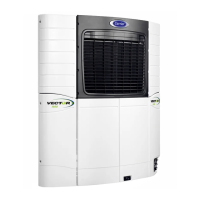
